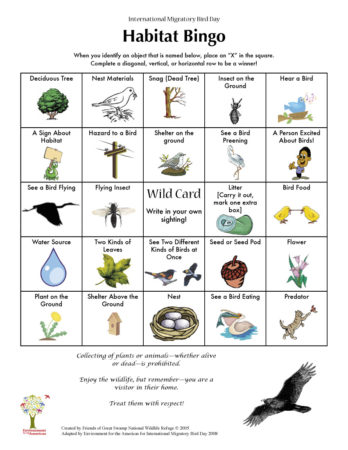Celebrate World Migratory Bird Day (WMBD) with us in our virtual “Birds Connect Our World” edition! Have fun learning about a new migratory bird every day. We have colouring pages, puzzles, activities, and more. Download for free and enjoy nature with your family at home.
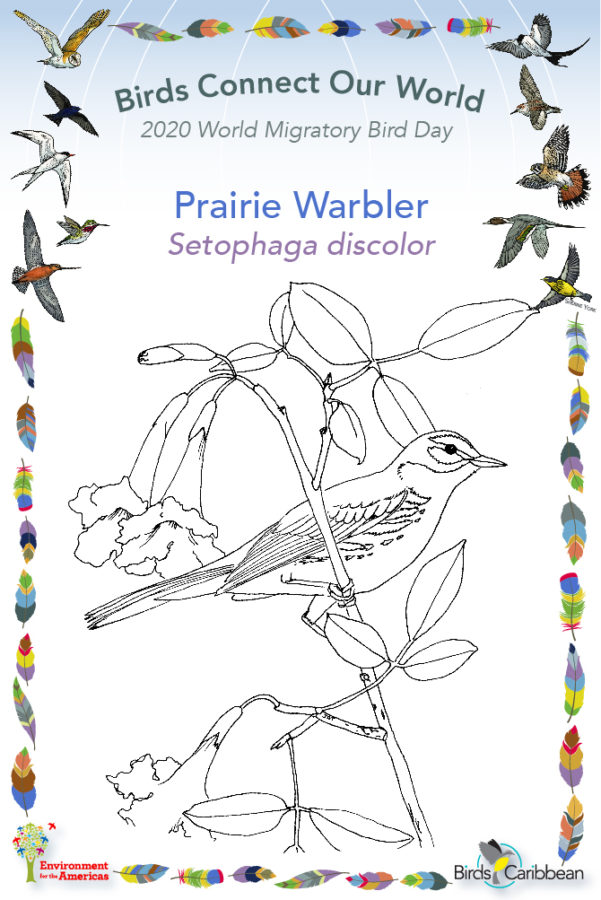
Migratory Bird of the Day: Prairie Warbler
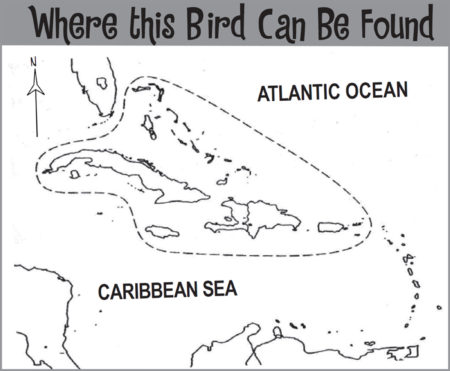
The males of this small warbler are bright yellow below and olive-green above with black streaking on the sides. They also have a black eye-line and a black semicircle under the eye, in a pattern that gives a “spectacled” appearance. Females and immature birds have a similar pattern, but it is less clearly defined and not as colourful. The underparts are paler yellow and the head may be yellow or greyish. These warblers can often be seen wagging their tails up and down.
Despite its name, the Prairie Warbler does not in fact breed in the open prairies. It breeds in forests and scrubby areas in the southeastern US. It arrives in the Caribbean from late August and will spend the winter here. Their numbers will start decreasing again in April as they head back north. They are most common in Northern parts of the Caribbean, including the Bahamas, Cuba, Hispaniola, Jamaica, Cayman Islands, Puerto Rico and the Virgin Islands. Their entire population spends the winter either in the Caribbean or Florida, making this a very important region for the species. During the winter Prairie Warblers like to live in coastal dry forests, mangroves, woodlands, orchards, and coffee farms; they may even show up in your garden! They eat insects and spiders that they pick off leaves and branches or catch out of the air. They have also been observed eating fruit.
Prairie Warbler numbers have declined in recent years due to loss of their preferred habitats. Along with many other migratory birds, they also face threats such as collisions with glass and predation from free-roaming cats. Making sure they have safe places to spend the winter, with plenty of bushy vegetation for them to forage in, can help this species. Learn more about this species, including its range, photos, and calls here.
Colour in the Prairie Warbler!
Download the page from Migratory Birds of the West Indies Colouring Book. Use the photos below as your guide, or you can look up pictures of the bird online or in a bird field guide if you have one. Share your coloured-in page with us by posting it online and tagging us @BirdsCaribbean #WMBD2020Carib
Listen to the call of the Prairie Warbler
The call of the Prairie Warbler is a brief “chuck” . On its wintering grounds, you are not likely to hear the high-pitched song of rapidly ascending notes it makes when breeding.
Puzzle of the Day
Click on the images below to do the puzzles. You can make the puzzle as easy or as hard as you like – for example, 6, 8, or 12 pieces for young children, all the way up to 1,024 pieces for those that are up for a challenge!
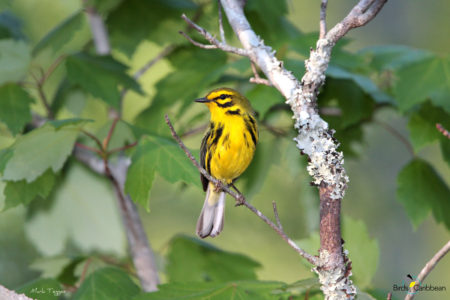
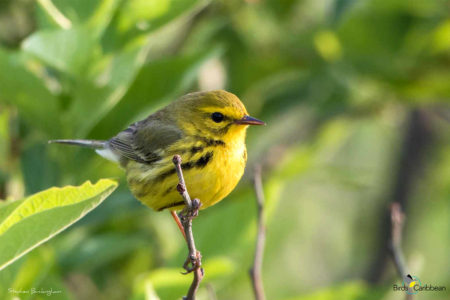
Activity of the Day
FOR KIDS: Play ‘Habitat Bingo‘ ! Find or identify the the objects in the Habitat Bingo – put an X in each square when you do. How many of the plants, birds, animals, resources or behaviours can you spot?
FOR KIDS AND ADULTS:
- Take a walk and see if you can spot any migrant birds. Use a bird field guide or the FREE Merlin bird ID app to help you identify the birds you are seeing.
- Enjoy the video below of a Prairie Warbler feeding. You can see this bird moving amongst the vegetation, picking up insects from the leaves- this type of foraging is called ‘gleaning’.
- Visit MigratoryBirdDay.org for many more free activities and resources to learn about migratory birds, their threats and conservation actions you can take.

